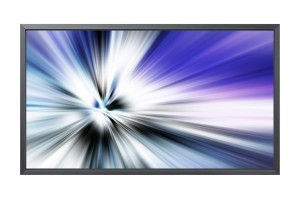As technology continues to advance, companies have more and more effective ways to sell products and services. Virtual trade shows are a perfect example of an incredible opportunity that technology provides to introduce your company to a wider range of possible consumers. To ensure you can leverage the advantages that a virtual trade show offers over a traditional show, it is important you plan ahead and keep the following tips in mind.
What to Know Before Hosting a Virtual Trade Show
Know Your Product and Your Audience
Consider your online presence and the products you are presenting, in a similar way that you would for a booth at a fair. While you may offer many products, a consumer walking by briefly will only retain interest if their first glance has products or services that suit their wants and needs.
Before hosting a virtual trade show, it is important to know what products/services tend to be more used by customers. If you are trying to use a virtual trade show to bring in new customers, then it is crucial to understand who your target audience is, so you can display the products that will interest them.
Once you have an understanding of your current audience and/or your target audience, you can begin to map out the order at which other products will be presented.
Create a Marketing Plan
Unless you are presenting your company on a larger platform that will help advertise your products for you, you will need a marketing plan to bring in potential consumers. Unlike an in-person trade show, people aren’t just going to randomly end up on your website or the virtual trade show’s website. You will need to put in the work to direct them there.
To create a marketing plan, it is once again important to know your target audience. Do you provide an online product that everyone could purchase, or an in person service that only applies to a small region of the world? What is the age range of your target audience, what platforms do they use the most?
Once you have figured out your target demographic, create clear advertisements that will drive your target audience to your website at the time of the trade show.
Make it Simple and Offer Guidance
Virtual trade shows, as well as your website, need to be organized in a concise way so consumers can find the information, products and services they are looking for within a few clicks. Prepare a schedule with all of the events, and have that schedule visible as soon as people enter your website.
When creating your landing page, try to look at it from an outside perspective (even better, get someone not involved to try and figure out your website.) All of this testing should be done before the date of the virtual trade show, so you can be sure there will be minimal confusion the day of.
Overall, it is best to assume people are unfamiliar with virtual trade shows, your company and the products you offer. Offer clear guidance so their viewing can be as simple as possible.
Create Opportunities for Engagement
A traditional trade show is usually all about contact, conversation and engaging with people. A virtual trade show does not need to be any different. Offer every chance for engaging with your audience, including a live chat function and up to date, active contact information.
Another great way to drive engagement is to create some sort of a raffle or contest (just like you would find at a normal convention or trade show.) Ensure that engagement is useful and drives customers to your products and services.
Just like at a normal trade show, people will remember engaging with you. Creating opportunities for engagement will not only ensure your audience is not confused, but also keep your company at the forefront of their minds.
Keep Track of Data
The only way to know if your pre planning was all worth it, is to ensure you have ways to track data. Be sure to set this up prior to the virtual trade show. For example, putting up signs in your community will offer no data, but advertising on Facebook (or any other social media network) will provide you with exact numbers of how many people saw your page and what group of people was most interested.
The ability to collect data is one of the best features of an online trade show as you can learn who clicked on a page, visited a booth and was interested in a product. Collecting data during this trade show will allow you to understand how to make your next virtual trade show more effective.
Conclusion
Virtual trade shows are an excellent way to offer information about your product/service to a wider range of people. That being said, planning for a virtual trade show is different from a traditional one.
To take advantage of the full potential that a virtual trade show has to offer, it is important to keep certain factors in mind. If you follow the advice above and most of all, collect data that will allow you to adjust your virtual trade show to improve every time, you may actually stick to virtual over traditional trade shows permanently.











